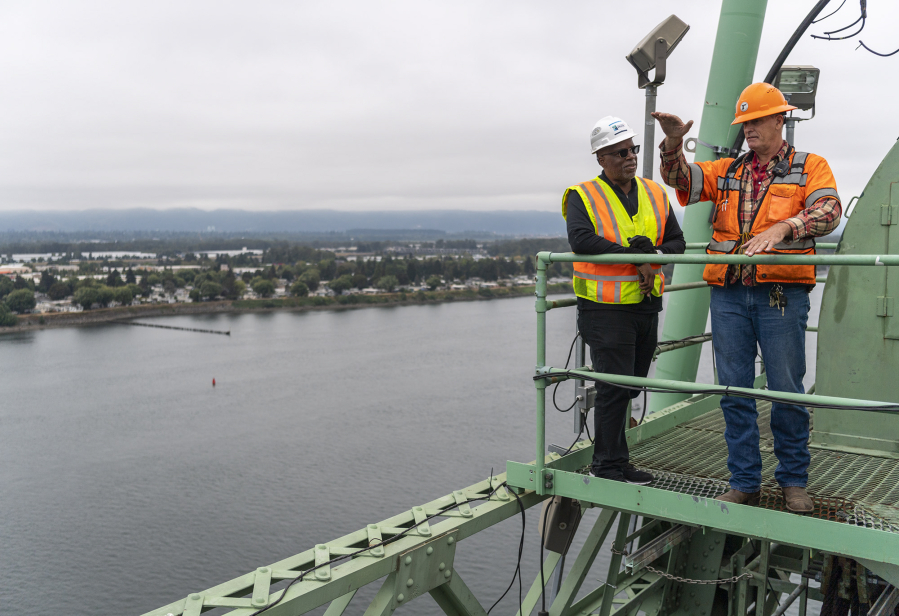As Greg Johnson stood atop a green scaffolding tower of the Interstate 5 Bridge on an overcast autumn afternoon, he leaned on a rail and looked at the water that separates Oregon and Washington.
Johnson has driven the bridge’s narrow lanes, walked its shaking sidewalks and visited the constantly shuddering control and cable rooms as the cars and trucks whiz from one state to another. But in his 2½ years in the program, Johnson had never climbed the 280 steps to its top.
It was his “first and last time,” he said to The Columbian on a tour to the bridge’s top.
Johnson is tasked with one of the most challenging jobs in the region’s history: leading the charge to replace the Interstate 5 Bridge — the only point where a stoplight can stop I-5 traffic.




